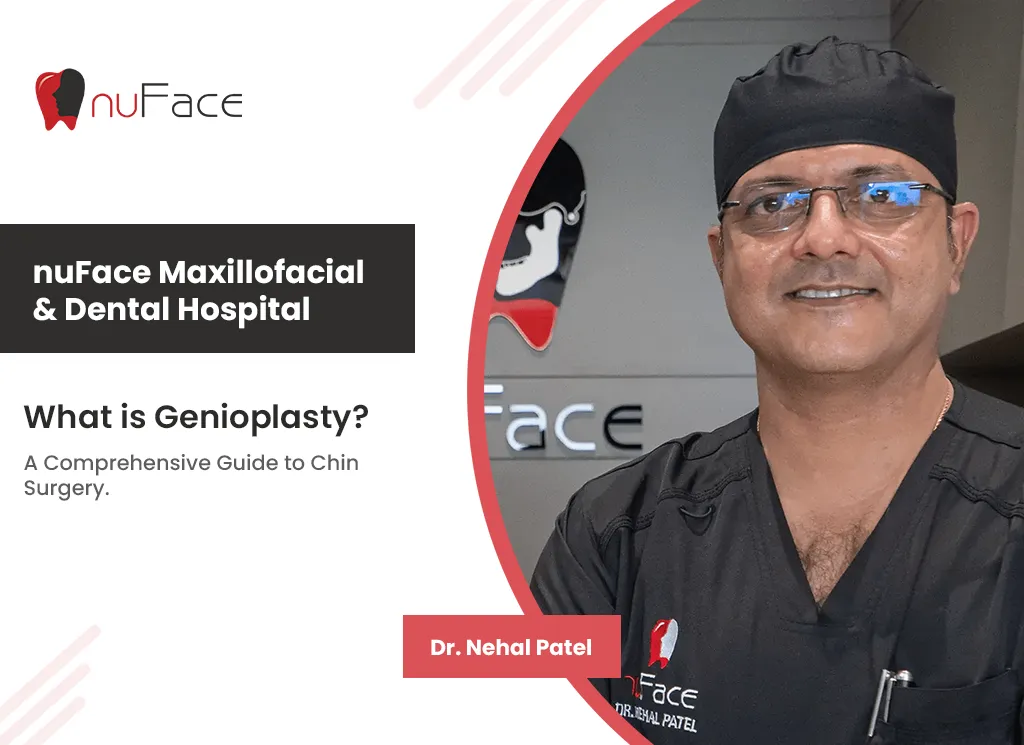A Comprehensive Guide to Chin Surgery
Genioplasty, also known as chin surgery, is a cosmetic or reconstructive procedure that modifies the shape, size, or position of the chin to improve facial balance and aesthetics.
It’s often performed to correct a weak or receding chin, but it can also address chin protrusion or asymmetry.
Genioplasty is popular for both its aesthetic benefits and its ability to address functional issues, such as obstructive breathing caused by structural abnormalities.
Unlike other forms of facial surgery that focus on the nose, eyes, or jaw, genioplasty is specifically centered on the chin and can have a profound impact on overall facial harmony.
Whether done for aesthetic reasons or medical necessity, this procedure can enhance the natural proportions of the face and provide lasting results.
What is Genioplasty?
Genioplasty is a surgical procedure that reshapes or repositions the chin. It can either involve sliding genioplasty, where the bone in the chin is cut and moved, or the use of chin implants to create a stronger chin profile. There are two main types of genioplasty:
- Augmentation Genioplasty: This procedure is performed to enhance a weak or receding chin. This can involve moving the chin bone forward (sliding genioplasty) or inserting an implant to create a more prominent chin.
- Reduction Genioplasty: This type of surgery is done to reduce the size of an overly large or protruding chin. The surgeon removes excess bone or tissue to achieve a more balanced chin profile.
Genioplasty can be performed alone or in combination with other facial procedures, such as rhinoplasty (nose surgery) or orthognathic (jaw) surgery, to achieve better facial proportions.
Why Consider Genioplasty?
People opt for genioplasty for a variety of reasons, both aesthetic and functional. Here are some common reasons why someone might consider chin surgery:
- Facial Imbalance
The chin plays a crucial role in facial symmetry. A weak or receding chin can make other facial features, like the nose, appear larger or more prominent. Similarly, a chin that is too prominent can create an unbalanced facial profile. Genioplasty can help harmonize the face by aligning the chin with the rest of the features
- Receding Chin
A receding chin, also known as retrogenia, is a condition where the chin is positioned too far back in relation to the rest of the face. This can lead to a “weak” jawline and a lack of definition in the lower face. Augmentation genioplasty can help bring the chin forward, improving the overall profile and creating a stronger jawline.
- Protruding Chin
Some people have a chin that juts out too far, which can create an unbalanced or exaggerated appearance. Reduction genioplasty can reshape the chin to make it more proportional to the rest of the face.
- Jaw Misalignment
In some cases, genioplasty is performed as part of a larger jaw realignment surgery. A misaligned jaw can cause both functional and aesthetic issues, such as difficulty chewing or speaking, and a chin surgery may be required to complete the jaw correction.
- Obstructive Sleep Apnea
In some cases, genioplasty is used as part of the treatment for obstructive sleep apnea, a condition in which the airway becomes blocked during sleep. By repositioning the chin, the surgeon can help open up the airway, reducing the symptoms of sleep apnea.
The Genioplasty Procedure
The approach to genioplasty depends on the type of surgery being performed—augmentation or reduction—and the patient’s individual needs.
- Sliding Genioplasty
Sliding genioplasty is a common technique for addressing chin abnormalities. The surgeon makes an incision inside the mouth or under the chin to access the chin bone. A horizontal cut is made through the bone, and the chin is repositioned. For augmentation, the bone is moved forward; for reduction, the bone is moved back or reshaped. Plates and screws are then used to hold the bone in place.
- Chin Implants
For patients seeking to enhance their chin without altering the bone structure, chin implants are a viable option. In this procedure, a silicone or other biocompatible material is implanted into the chin to create a more prominent appearance. The incision is typically made inside the mouth or under the chin to insert the implant, and the recovery time is often shorter than with sliding genioplasty.
- Reduction Genioplasty
In reduction genioplasty, excess bone is removed to reduce the chin’s size. This can involve shaving down the bone or repositioning it to create a softer, more balanced appearance. Like sliding genioplasty, the incision is typically made inside the mouth to avoid visible scarring.
Recovery and Postoperative Care
Recovery from genioplasty varies depending on the type of surgery performed. Most patients experience swelling, bruising, and mild discomfort for the first few days to weeks after the procedure. Pain can typically be managed with over-the-counter or prescription medications.
- Initial Recovery Period: The first few days post-surgery involve swelling and bruising, particularly around the chin and lower face. Patients are advised to keep their head elevated and apply ice packs to reduce swelling.
- Dietary Restrictions: In the first few weeks, patients are often instructed to follow a soft or liquid diet to avoid stressing the chin area. Chewing too soon can interfere with the healing process.
- Long-Term Recovery: Full recovery usually takes several weeks to a few months. The results of genioplasty become more apparent as the swelling subsides, and patients are typically able to resume normal activities within 4-6 weeks.
- Follow-Up Care: Regular follow-up appointments with the surgeon are crucial to ensure proper healing and to address any concerns or complications that may arise during recovery.
Risks and Complications
As with any surgery, genioplasty carries potential risks and complications, though they are rare. Some of these include:
- Infection: Any surgical procedure can lead to infection, though this risk is minimized with proper care and hygiene.
- Nerve Damage: There is a small risk of nerve damage, which can lead to numbness in the lower lip or chin. This is usually temporary but may persist in rare cases.
- Implant Complications: If a chin implant is used, there is a chance of implant displacement or rejection, though these are uncommon when performed by an experienced surgeon.
Genioplasty is an effective surgical solution for individuals looking to improve their facial harmony, enhance their jawline, or correct functional issues related to chin alignment.
Whether through sliding genioplasty or the use of chin implants, this procedure offers customizable options to address each patient’s unique needs.
With proper planning, expert surgical execution, and attentive postoperative care, genioplasty can provide long-lasting and transformative results, boosting both appearance and confidence.
If you are considering chin surgery, consult with a qualified maxillofacial surgeon to discuss your options and determine the best approach for achieving your aesthetic or functional goals.






